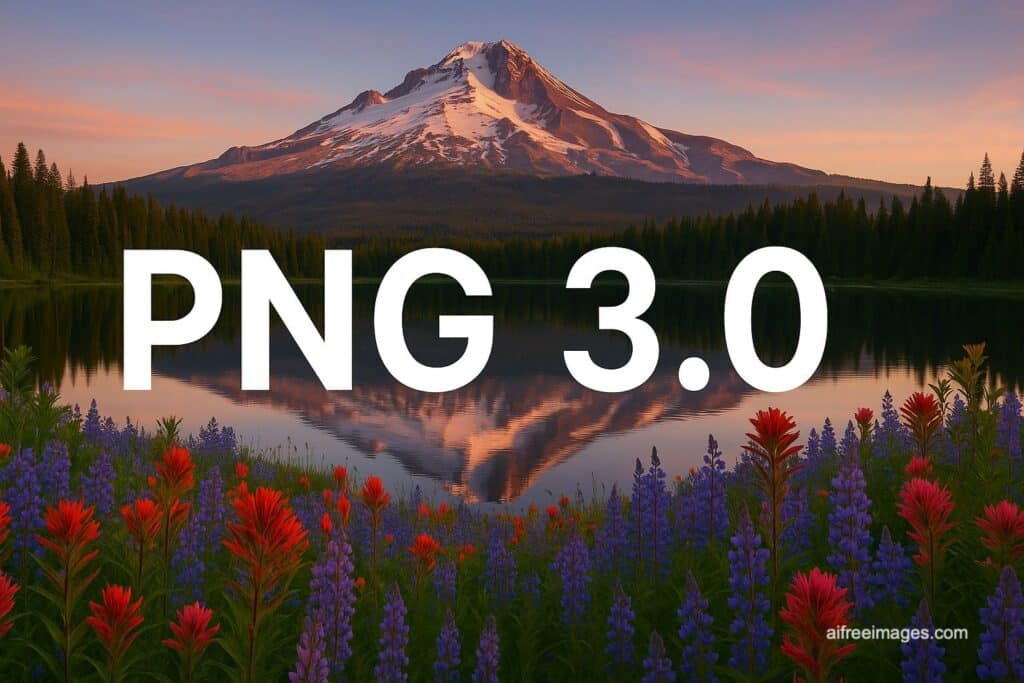After more than 20 years of stagnation, the PNG format gets a modern overhaul, bringing native animation, HDR support, and Exif metadata integration
The Portable Network Graphics (PNG) format, a longstanding staple of the internet, has received its most significant update in over two decades. The new PNG 3.0 specification, officially published by the World Wide Web Consortium (W3C), introduces long-awaited features such as native animation support, true High Dynamic Range (HDR) imaging, and integrated Exif metadata, all while maintaining the format’s hallmark of lossless quality and transparency.
This update brings PNG back into relevance in an era dominated by formats like WebP, AVIF, and JPEG XL. But what’s actually new, and how does PNG 3.0 compare to its predecessors and rivals?
A Timeline of PNG’s Evolution
| PNG Version | Year | Key Features |
|---|---|---|
| 1.0 | 1996 | Lossless compression, alpha channel, 8–16-bit color depth |
| 1.2 / 2.0 | 1999–2003 | Technical maintenance and clarifications |
| APNG (unofficial) | 2008 | Mozilla’s extension for animation, not officially adopted |
| 3.0 | 2025 | Native HDR support, official animation, Exif metadata, format modernizations |
Since its inception, PNG has been a preferred format for images requiring transparency and high fidelity—think logos, screenshots, and web graphics. But as newer formats like WebP and AVIF introduced animation and advanced compression, PNG risked being left behind.
PNG 3.0 changes that.
Native Animation Support (APNG Becomes Official)
Although Animated PNG (APNG) was developed by Mozilla and supported in browsers like Firefox and Chrome for years, it lacked official status—until now. PNG 3.0 formally includes animation as a first-class feature, standardizing its use across applications and platforms.
Advantages:
- Higher quality animation than GIF
- Full transparency support
- Lossless compression
- Already supported in modern browsers and editing tools
True HDR Imaging with Minimal Overhead
One of the headline features is native support for High Dynamic Range (HDR). With only four additional bytes per file, PNG 3.0 can now display expanded color gamuts and deeper contrast ratios, bringing it in line with the visual richness offered by AVIF and JPEG XL.
| Format | HDR | Animation | Alpha Transparency | Lossless Compression | Web Compatibility |
|---|---|---|---|---|---|
| PNG 3.0 | Yes | Yes | Yes | Yes | Very High |
| WebP | Partial | Yes | Yes | Yes | High |
| AVIF | Yes | Yes | Yes | Yes | Moderate |
| JPEG XL | Yes | Yes | Yes | Yes | Low (limited) |
| GIF | No | Yes | No | No | Universal |
Exif Metadata Integration
For the first time, PNG files can officially include Exif metadata, allowing for storage of camera settings, GPS coordinates, copyright details, and more. This is particularly useful for photographers and mobile devices where metadata is key to workflow and archival.
Compatibility and Tooling
Support for PNG 3.0 is already rolling out across the ecosystem. Popular browsers including Chrome, Firefox, Safari, and platforms such as Photoshop, DaVinci Resolve, Avid Media Composer, and Apple’s iOS/macOS have incorporated the new spec.
Behind the scenes, broadcast and streaming platforms are updating tooling for PNG 3.0, enabling HDR banners, overlays, and tickers that fully leverage the updated format.
Why Now? The Demand Behind the Update
The renewed push for PNG 3.0 came from a diverse coalition of organizations including Adobe, Apple, BBC, Google, Comcast/NBCUniversal, MovieLabs, and others. The initial spark came from the W3C Timed Text Working Group, which needed HDR support for subtitles and captions. That momentum grew into a full modernization of the format.
PNG 3.0 is not only an update—it’s a rebirth.
Looking Ahead: What’s Next for PNG?
With the third edition finalized, work is already underway on PNG 4.0, which will focus on:
- Improving interoperability between HDR and SDR content
- Enhancing compression efficiency
- Supporting parallel encoding and decoding
A fifth edition is also being planned to introduce more aggressive compression techniques, aiming to compete directly with formats like AVIF on size and speed without sacrificing quality or transparency.
Conclusion
With version 3.0, PNG regains its place in the modern image format landscape, offering a compelling combination of lossless quality, transparency, HDR, animation, and metadata—all in an open, patent-free format trusted by governments, archivists, and professionals alike.
For designers, developers, content creators, and archivists, PNG is no longer just legacy—it’s future-ready.
Sources: programmax and W3C png 3

